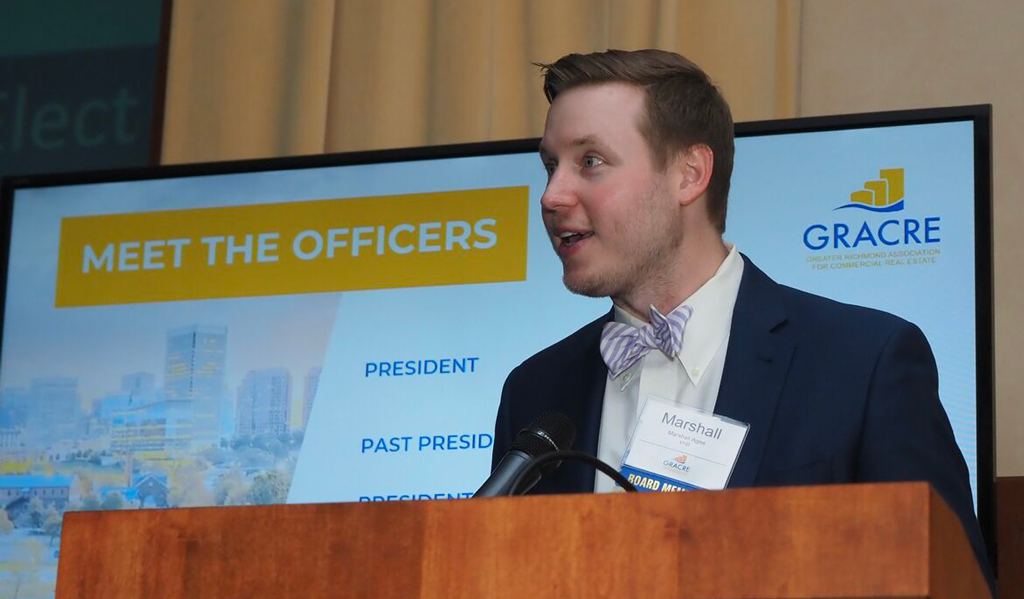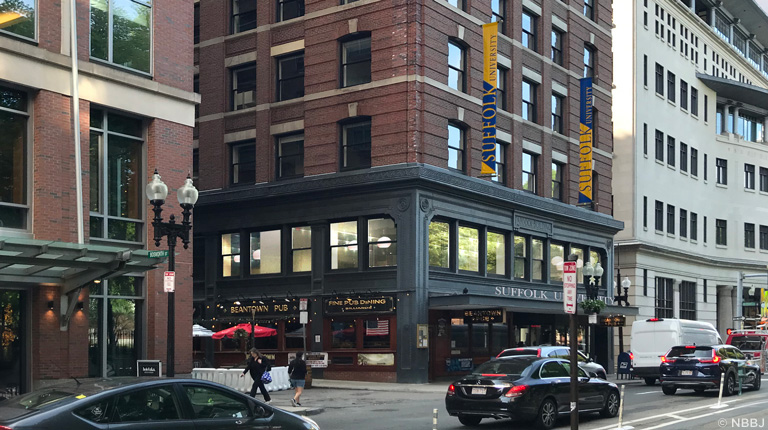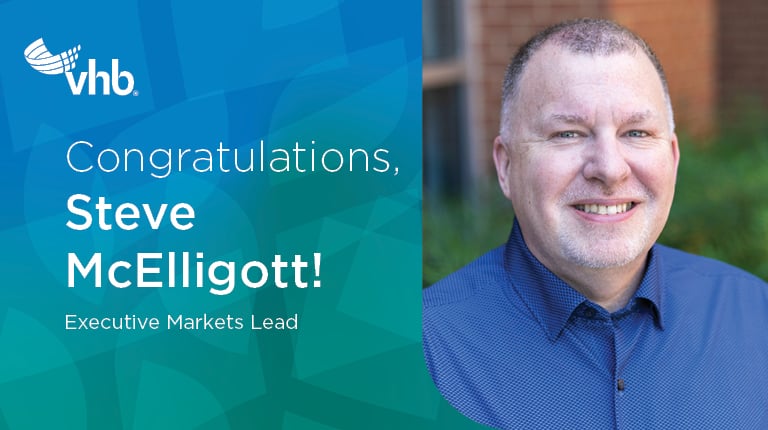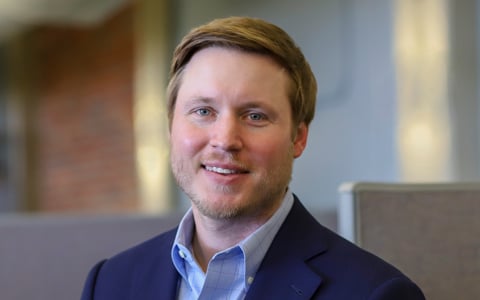
Marshall Agee, PE, LEED AP BD+C, is a land development engineer who recently stepped into the role of I-64 Institutions Market Leader, focusing on higher education, K-12, and healthcare across Richmond, Hampton Roads, and in between. As the I-64 Institutions Market Leader, Marshall will work with a robust regional team of integrated professionals to help create environments that foster innovation and collaboration.
Marshall is also stepping into another significant position in 2025—the President of the Greater Richmond Association for Commercial Real Estate (GRACRE). We sat down with Marshall to learn more about the role and how he plans to help clients and partners with their goals and anticipated challenges.
VHB: As the new I-64 Institutions Market Leader, what will be your primary focus?
Marshall: Our team will help clients create vibrant, dynamic environments that align with the missions of our educational and healthcare partners. When we’re collaborating on a project, our deliverables should exceed the expectations of our stakeholders by fostering collaborative partnerships with the owner, developer, and architect. Our goal is to deliver projects focused on user-centered design—keeping people at the center. To do this, we first approach projects by listening to stakeholders to understand how the spaces and environments will serve the needs and preferences of their users and community.
VHB: One of your hallmark projects at VHB has been the Ivy Corridor project at the University of Virginia. Tell us about some of the key strategies from that project that will carry-over to your new role?
Marshall: UVA’s Ivy Corridor project is a great example of how thoughtful planning and effective phasing can transform a space. We focused on maintaining the project timeline and milestones, integrating civil engineering, landscape architecture, and transportation planning to align with the University’s long-term vision.
Given the complexity of the project—overlapping design and construction phases within a constrained site—meeting design milestones on time was critical. To achieve this, we utilized our quality control plan to maintain a structured approach to risk mitigation at all phases of development. This level of quality control allowed us to identify potential challenges early, address them proactively, and ultimately minimize risks throughout the project.
A key part of our success was teamwide alignment and accountability. We held weekly coordination calls, assigned action items, and rigorously followed up to resolve issues promptly. By having an active presence on-site, we fostered a close working relationship with contractors, enabling clear communication, efficient responses to Request for Information (RFIs), and a shared commitment to a high quality outcome.
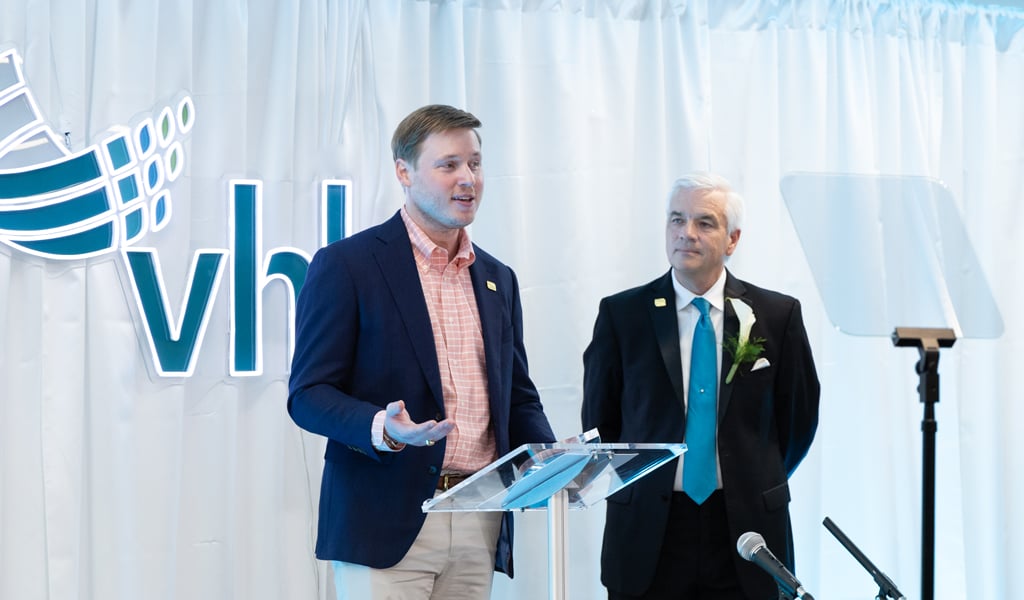
VHB: Institutions face increasing demands for growth and innovation. How does VHB navigate these challenges?
Marshall: Higher education, K-12, and healthcare campuses are indeed evolving to attract faculty, patients, students, and visitors. It’s about balancing innovative design with functional and efficient use of space. My approach will build on the collaborative model we’ve implemented with projects at UVA, like the Democracy Building, School of Data Science, and the Health System’s Emergency Department Expansion. By breaking projects into manageable phases, we can minimize costs in early phases without sacrificing future needs. Adaptability is a core strength of our project delivery approach.
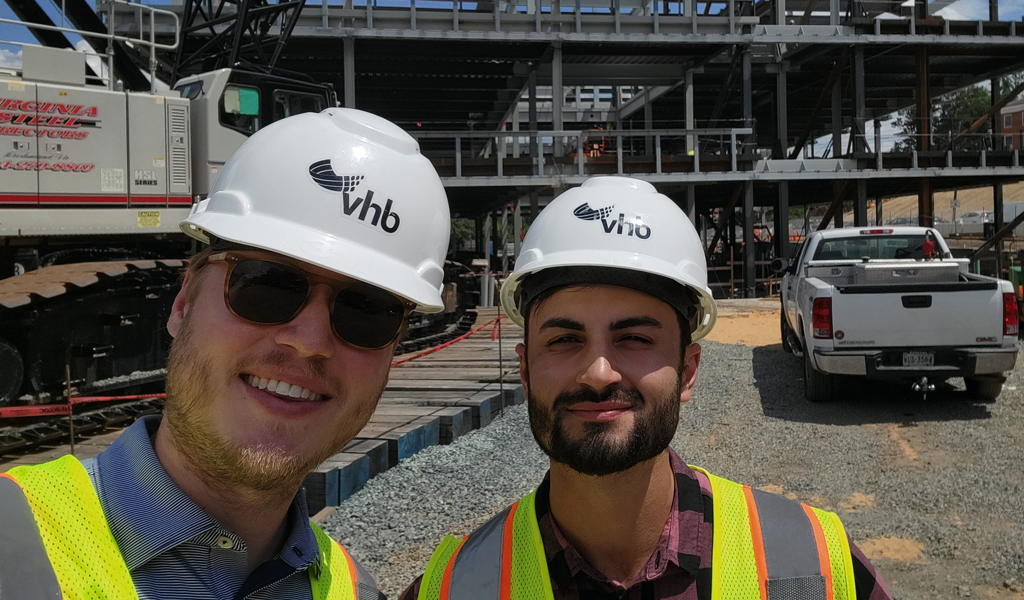
We also foster a culture of innovation at VHB by encouraging creativity and supporting continuous learning. We leverage technologies such as AI and data analytics to streamline processes and provide valuable insights into market trends and behaviors, which is always helpful for decision making. For example, at the College of William & Mary’s New Fine and Performing Arts Complex, VHB provided a traffic and pedestrian circulation study to help determine trip generation and trip distribution of the campus area surrounding the complex. This information helped the team understand potential traffic impacts, which influenced our access and circulation plans.
VHB: Building strong industry relationships is a key component of business development. How has your involvement in organizations like GRACRE helped you cultivate meaningful connections and support your work at VHB?
Marshall: Being a part of an industry organization, like GRACRE, allows me to do something that’s incredibly valuable—to look beyond my own immediate responsibilities and take a broader pulse on what’s happening within our communities. It’s easy to stay focused on day-to-day projects, but staying engaged with industry peers, architects, contractors, and other AEC professionals gives me a deeper understanding of challenges and opportunities that may shape our built environment.
Having been born and raised in this community, I see it as both a professional responsibility and a personal passion to contribute to its growth. I find purpose in going beyond my day-to-day work to connect with industry partners on a deeper level and collaborate to create a positive and lasting impact.
As a past Board Member and now President, I’ve had the chance to participate in and lead conversations about everything from market trends to infrastructure development. For example, in January, we hosted a panel discussion on Sports Tourism, and in February we’ll hold our annual Market Review, looking at the successes and shortcomings of 2024 and the opportunities ahead in 2025.
Beyond these discussions, we focus on strengthening our industry and our community through signature events like the Annual Awards Program, topic-driven breakfast series, oyster roast, and golf tournament. We’re also working to build out a summer internship program that will help the next generation of industry professionals see the real-world impact of our work beyond the classroom. I’m looking forward to this year of fostering stronger connections and facilitating partnerships and resource sharing.
